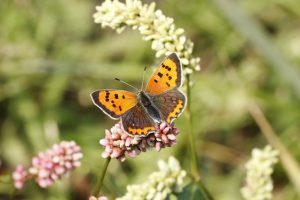
Japanese Knotweed is a plant that can cause friction between neighbours, adversely affect the value of a property and spreads incredibly quickly – to the detriment of other plants in a garden. It grows in lush clumps that quickly push out competing species. On the bright side, it is easy to identify so the homeowner can quickly take action to eradicate this plant menace.
There is ongoing discussion around how this plant spreads – and how to effectively address the problem if you have purchased a property that has Japanese Knotweed – however, what is not often discussed is how this alien species first arrived in Britain. The history of the plant is fascinating and a study of that history provides some clues about just why it has spread so quickly in the U.K. – and how both homeowners and authorities can learn from its history in order to deal with the spread of alien plants.
Where does Japanese Knotweed Originate?
As its name would indicate Japanese Knotweed was originally found in Japan – and it also grows wild in China and Korea. It is most at home in volcanic soil. In its countries of origin, it grows wild and can also spread incredibly quickly due to an extensive network of underground Rhizomes. However, in its natural environments, its spread is limited by predation by fungi and insects. It also faces stiff competition from other native plant species, as well as a more challenging environment than that which characterises the United Kingdom.
Dutch naturalist Maarten Houttuyn first described the plant in the 19th century and gave it the name ‘Reynoutria japonica’. Records relating to its discovery were lost and the plant was only re-identified by European botanists in Japan around 150 years of the original discovery. It was then given a new name by Phillip von Siebold (a Bavarian Botanist) along with his partner, Zuccarini. That new name was ‘Polygonum cuspidatum’. It was only in the early 20th century that Makino, a Japanese botanist discovered that the two plants were actually a single species. If you are in the Portmouth or surronding area and are in need of knotweed removal then I recommened that you do a google search for ‘knotweed removal Portsmouth’ to see services you have in your area.
How did Japanese Knotweed arrive in the U.K.?
In 1850, Philip von Siebold imported the pant into the U.K., not realising the negative impact it would have on the environment. During this time there was a growing interest in botany among the privileged classes of Britain – and they funded Botanists like Siebold who received funds from investors on the strength of despatching new and interesting species back to his sponsors, who would then place them in nurseries to be sold to private individuals or to botanical gardens.
Why was it sent to Britain?
The plant was intended for commercial sale and also to add interest to boto0nical collections. Siebold’s reputation as a botanist was based on the fact that he recorded, collected, and despatched around 1,000 different species during his career. his reputation meant that the plants he sent back to sponsors would find a ready pool of buyers. Many of the plants that Siebold despatched were grown first in his garden in Dejima, a man-made island near Nagasaki. From there they were sent to his home country of the Netherlands, cultivated in Leiden, and despatched to botanical gardens in Belgium and the U.K. A nondescript box containing Japanese Knotweed arrived at Kew botanical gardens in 1850.
